Article
The Real Cost Of Building A Modular Home in 2025
Modular construction
modular costs
May 11, 2023

Written by
Laurie Raikes
If you’re planning to build a modular home, it’s wise to think about the total cost. While it does involve a significant financial investment which can seem overwhelming, building a new home can also bring a great sense of accomplishment with careful planning and budgeting.
In this article, we break down the true cost of building a modular home. With this helpful information, you can be confident and prepared for the journey ahead.
What is a Modular Home?
A modular home consists of multiple sections that are fully built in an off-site factory. When these modules are complete, they are delivered to the building site and connected to the foundations to form a permanent, cohesive structure. Once the site work is finished, the house is as strong and durable as a conventional building.
Since technology has advanced and designs have improved, modular houses have grown in popularity throughout Australia. When building companies first started building this way, the designs were boxy and small, but now, you’re spoilt for choice with a modern range of layouts and architectural style designs.
As one of Australia’s leading modular home builders, Anchor Homes has been designing, building and delivering quality modular homes for over 20 years. To explore our range, browse our home designs or download our price list to support your planning and research.
The True Cost of Building a Modular Home
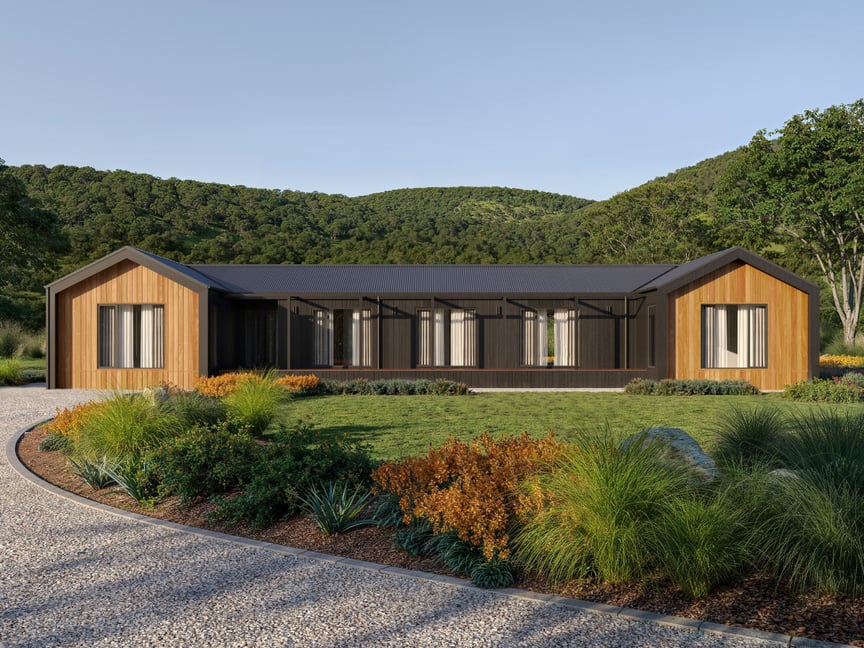 In this section, we outline how building a modular home can affect your time, emotions, and finances.
In this section, we outline how building a modular home can affect your time, emotions, and finances.
Time
Modular homes are built in a managed factory environment where weather conditions and travel time are not a factor. This consistency allows the builders to complete the house much faster than a traditional house that’s built on-site.
From the time factory construction begins, it usually takes around 14-20 weeks until you can move into your finished home. This includes the construction phase of 8-10 weeks and the on-site fit-out phase of 6-10 weeks on your building site (project-specific).
Emotional Costs
With modular construction, homeowners tend to enjoy the building experience far more. That’s because the factory portion of the project reduces the number of unexpected delays and the cost is easier to predict. And, thanks to faster build times, you can move into your dream home much sooner.
With the innovative techniques modular builders use, you can also customise your modular home to suit your lifestyle. For example, you may like to add another bedroom, upgrade the bathroom, or adjust the kitchen layout. Whatever you need, ask your building company during the design phase.
Financial Costs
Modular homes can offer greater cost certainty compared to traditional builds. Because most of the construction happens in a controlled factory setting, there’s less risk of weather delays or blowouts from unexpected on-site issues - both of which can increase costs in conventional builds.
While the final price will depend on your site, inclusions and customisations, modular construction gives you a clear, upfront view of your investment before work begins.
The Cost of Land in Australia
You will also need a suitable piece of land to build your home on. Before your building company can draw up the designs and start construction, they need to assess the site and any challenges that could affect the delivery or design process. Generally, flatter sites are easier to build on which helps to bring the cost down.
If site access for the delivery trucks and the crane is restricted, it can add to the cost of installation. Although building on a sloping block is still possible, before you snap one up, be sure to tally up the additional costs that you may incur during building.
You can browse online sites like Real Estate Australia to find blocks of land for sale in your area.
Customisations and Upgrades
If you want to tweak your house plan, your building company may raise the price to cover the additional design and material costs. You can read more about our customisation pricing below.
Modular House Prices in Australia
The price of a modular house will vary depending on house size, building materials, site location, the number of modules, and any customisations. Before construction can begin, you will also need to pay the following pre-construction fees:
• Design and drafting services
• Site engineering reports (a soil test, BAL & wind rating, and a site feature survey)
• Colours and specification appointment
• A 7-star energy rating (VIC) or BASIX (NSW)
Base Prices.png?width=864&height=576&name=Location%20Landing%20Page%20IMAGES%20(28).png)
At Anchor Homes, the base cost of our modular homes covers a large portion of the building project, including the following:
• Preliminaries
• Exterior
• Insulation
• Doors and windows
• Interior fit out
• Floor coverings
• Kitchen
• Bathroom, ensuite, and laundry
• Electrical and plumbing
• Painting
• Delivery to site
See our comprehensive list of standard inclusions here.
Delivery Costs
With transportable homes, you also need to think about the cost of transportation. This can cost anywhere from a few thousand to tens of thousands but will depend on the module dimensions and the distance from the factory.
Here at Anchor Homes, delivery and truck installation is included in the base price of all of our standard designs. This may be affected by the delivery route and crane hire, so speak with our consultants for an accurate transport quote specific to your site.
Site Connections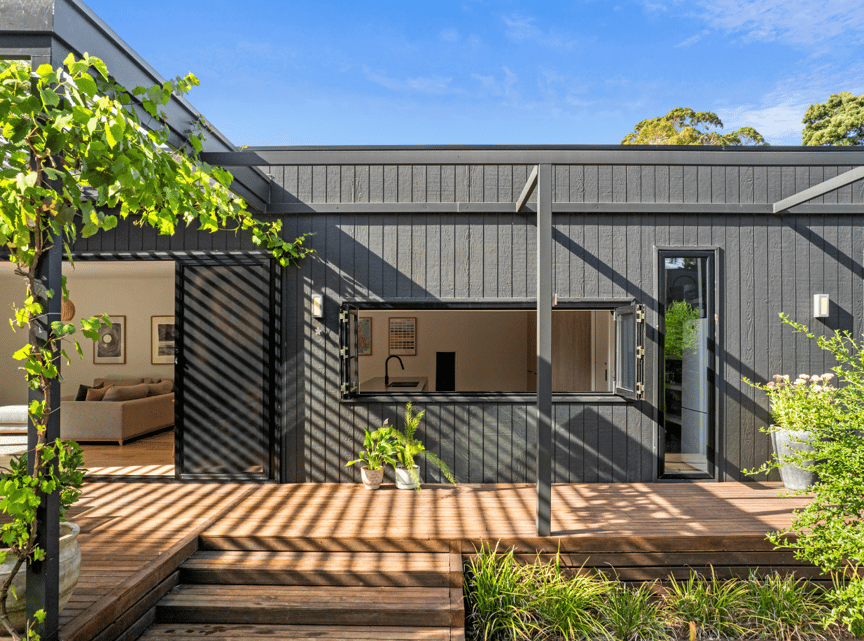
Once the house is delivered to the final location, it needs to be connected to site services including electricity, water, and sewerage. The cost will be determined by the availability of local services and the proximity of connection pits.
Customisations
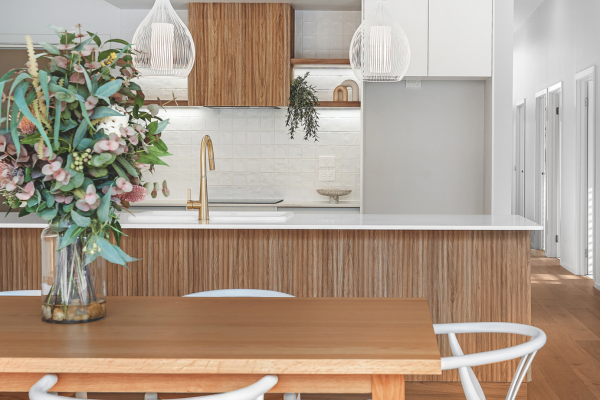
For certain design edits and upgrades, the price of your modular home may increase. While you can avoid this by choosing a standard design, it may be worth the investment to create your dream home.
Common house upgrades include:
• Hardwood timber flooring
• Decking and verandahs
• Balustrades
• Air conditioning
• Carport or garage
• Stone benchtops and splashbacks
• Plumbing fittings
• Floor-to-ceiling tiles
• Kitchen appliances and more.
Over To You
Find your ideal house plan in our range or take a virtual tour of our display homes. When you’ve found a design you love, check out our transparent price list.
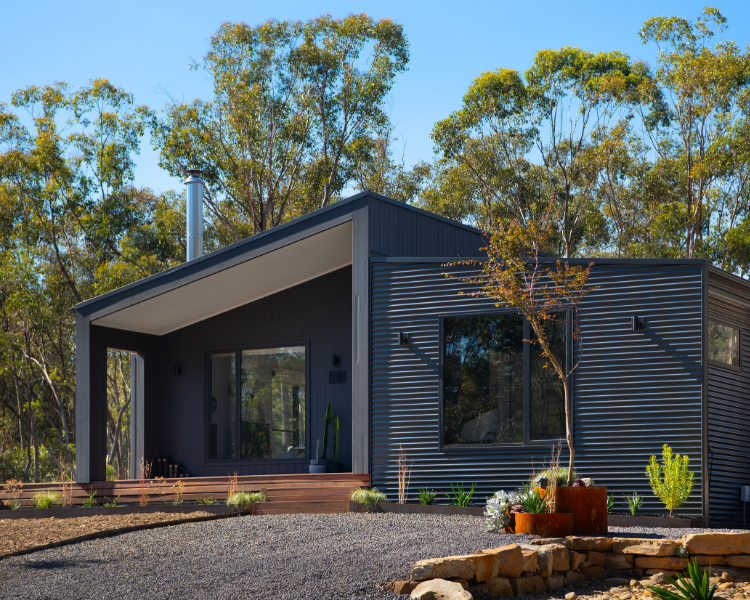


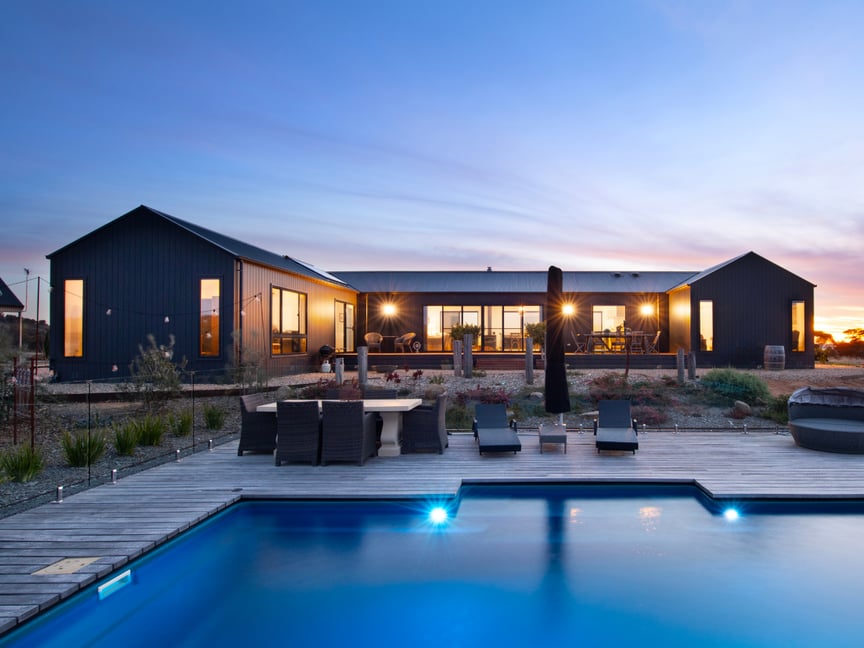
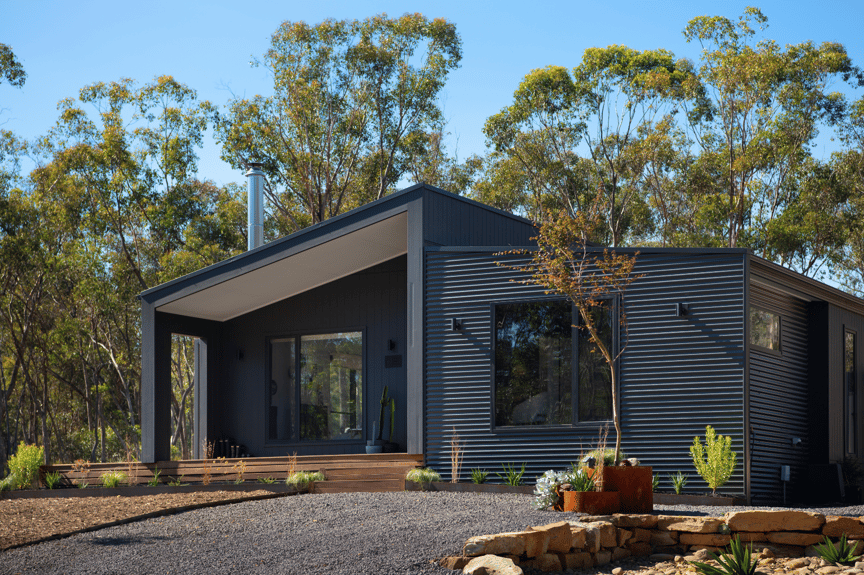
%20(12).png?width=864&height=356&name=Add%20a%20subheading%20(1400%20x%20900%20px)%20(12).png)
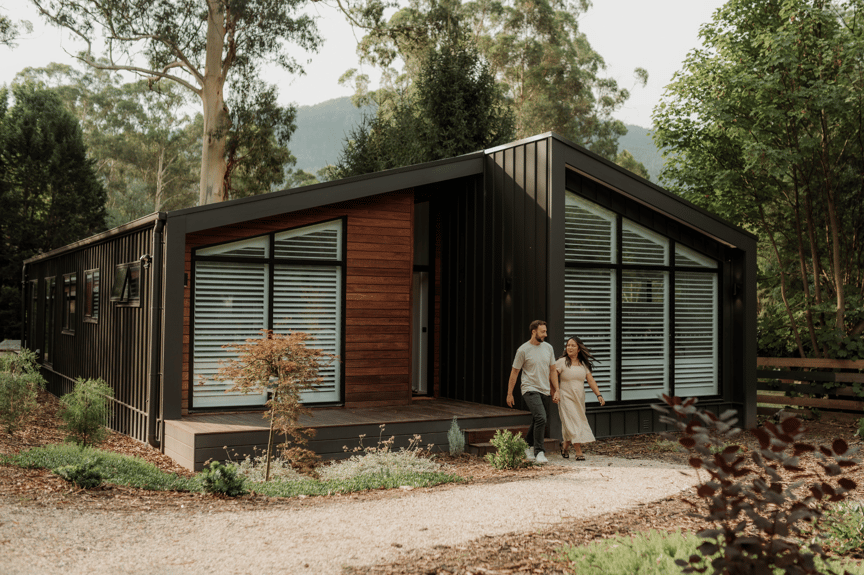
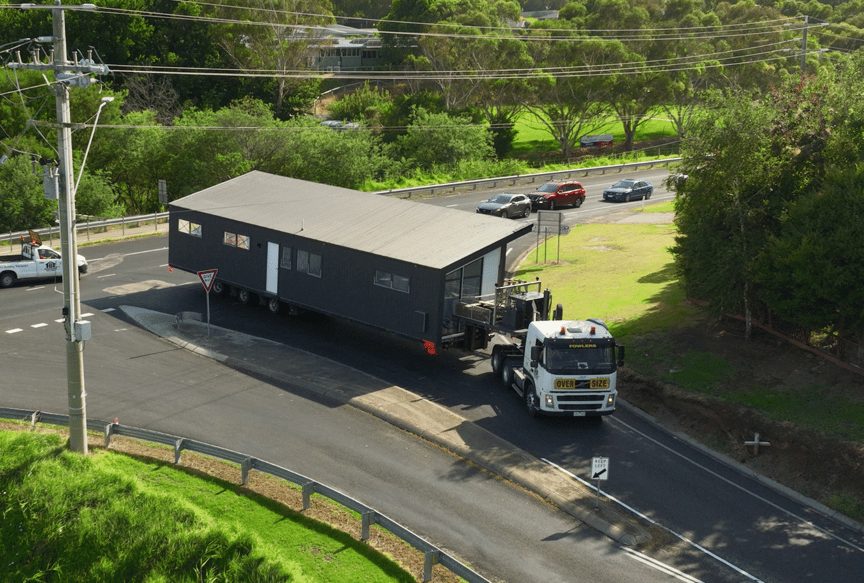

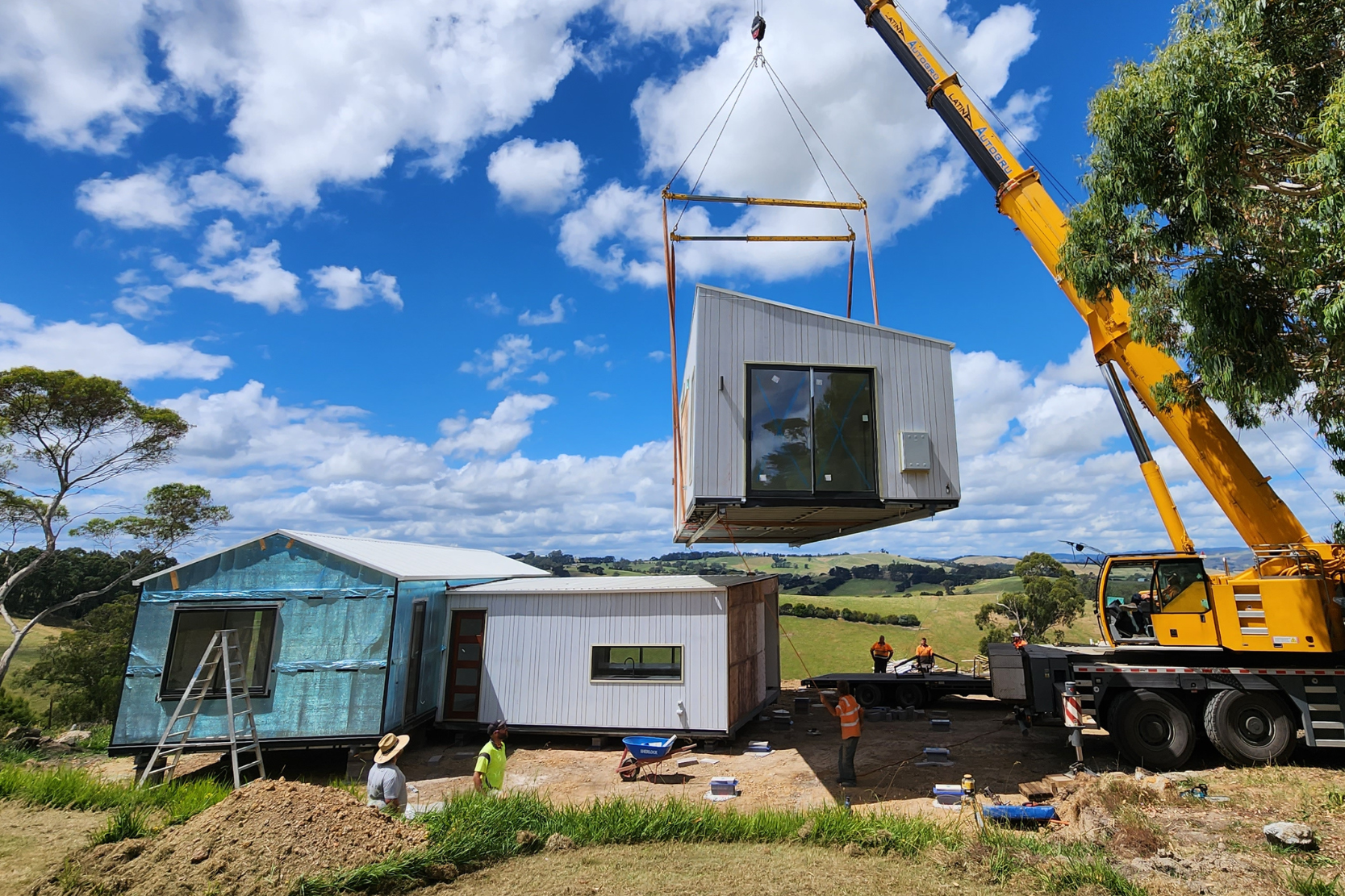
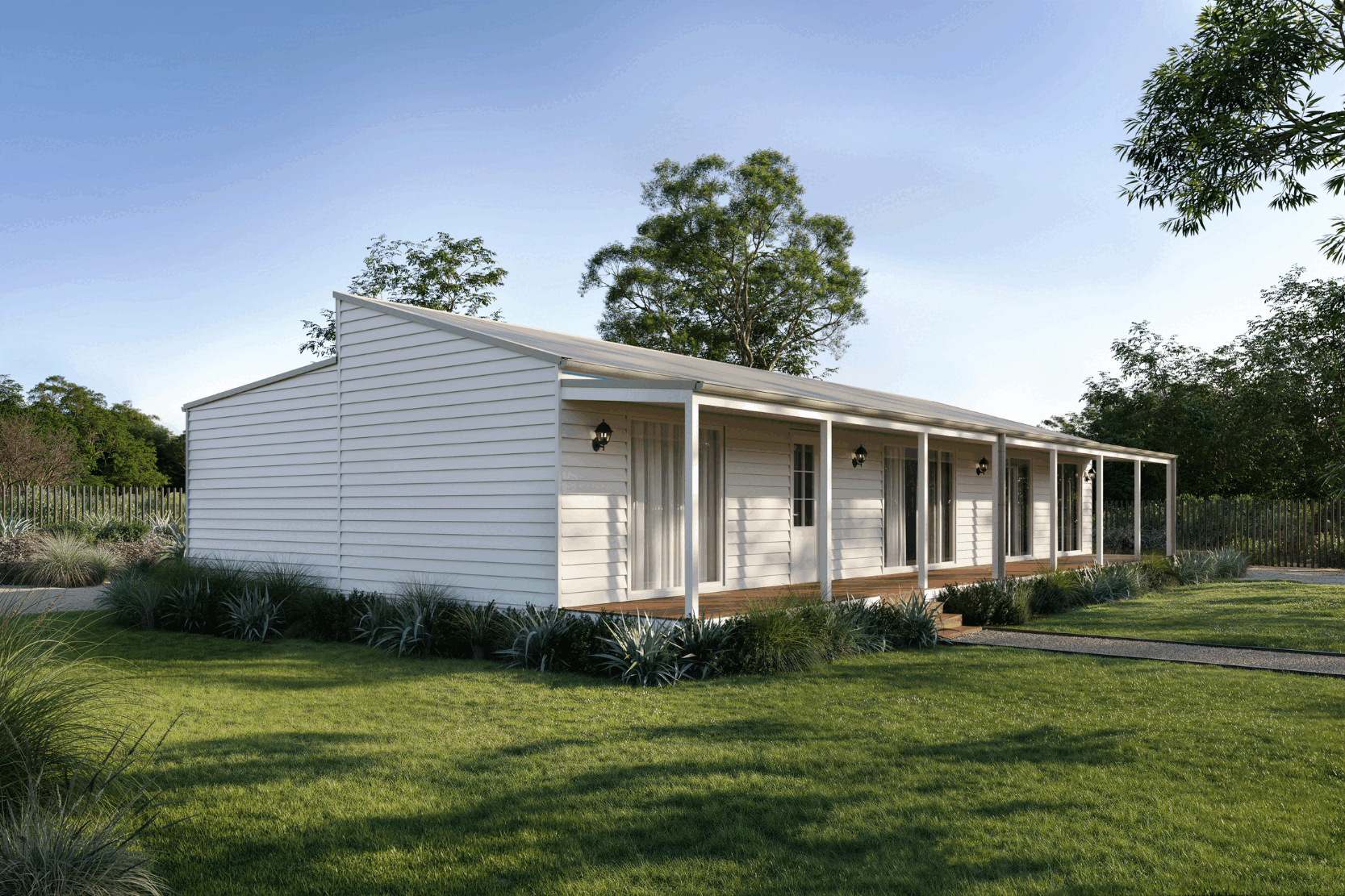
.png)